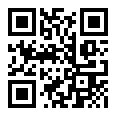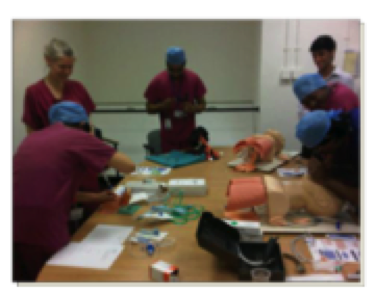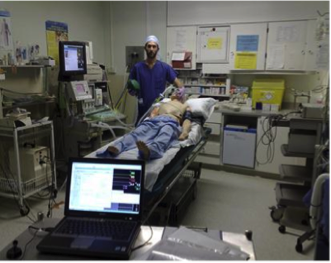| ePOSTER | ||
| Theme: Simulation |

|
| Abstract Title |
 |
|
| The Tools, the process and the training- a three pronged approach to improving the management of the difficult airway | ||

|
Authors: |
Boynton Claire. Heather Morris. Taran Tatla |
Institutions: | Royal Brompton Hospital Northwick Park Hospital |
Over two years we have developed a unique multidisciplinary training day in difficult airway management. A workshop is followed by in-situ high-fidelity simulation involving theatre staff and anaesthetic and surgical trainees. We are conscious of Martin Bromiley’s words asking for tools, process AND training ‘so we can make quantum leaps in safe practice’.
The morning consisted of skills stations: the tools recommended by the Difficult Airway Society (DAS) for management of the difficult airway, with discussion of DAS guidelines, i.e. the process. An afternoon of multi-disciplinary workplace-based simulation with ENT surgeons, theatre staff and anaesthetists followed. The simulation covered 3-4 difficult airway simulations requiring all members of the team to become involved as the scenario progressed. In-depth structured de-brief followed each scenario. Candidates completed a questionnaire rating confidence with a full range of airway equipment before and after the workshop and post simulation questionnaire evaluating the simulation, using a Likert scale (1-6)
All 78 candidates felt that the simulation replicated the stress of “live” situations (Mean =4.8), addressed training needs (mean=5.5), improved clinical knowledge, teamwork, leadership and non technical skills (mean =5.6) There was an increase in confidence with all airway equipment
 Simulation is an effective tool for teaching difficult airway management. A single workshop followed by in-situ simulation improves staff confidence with the tools and process necessary to improve outcome. We recommend a combined approach to teaching with an emphasis on multi-disciplinary participation.
Simulation is an effective tool for teaching difficult airway management. A single workshop followed by in-situ simulation improves staff confidence with the tools and process necessary to improve outcome. We recommend a combined approach to teaching with an emphasis on multi-disciplinary participation.
This course demonstrates success with multi-disciplinary training using in-situ high fidelity simulation AND workshop-based teaching.
Cook TM, Woodall N, Frerk C. Major complicaitons of airway management in the UK (NAP4) British Journal Anaesthesia 2011 May;106(5):617-31.
 Send Email
Send Email